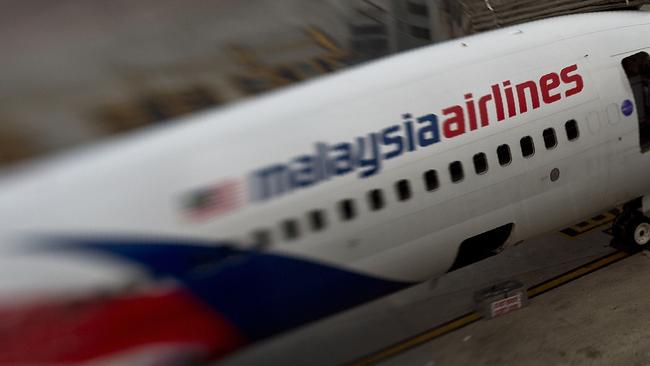MH370 rogue pilot ‘not ruled out’
The ATSB has explicitly acknowledged for the first time that a rogue pilot might have flown MH370 to the end and ditched it.

The Australian Transport Safety Bureau has explicitly acknowledged for the first time that a rogue pilot might have flown Malaysia Airlines Flight MH370 to the end and ditched it outside the search area determined by the bureau’s “ghost flight” and “death dive” theory.
Peter Foley, the director of the ATSB’s failed $200 million underwater search for the aircraft, told a Senate estimates hearing yesterday: “We haven’t ever ruled out someone intervening at the end.”
For the first time, Mr Foley said publicly what he is understood to have told some privately: that the ATSB believes a pilot was in control of the aircraft for at least the first hour and a half after it veered off course 40 minutes into the flight from Kuala Lumpur to Beijing, its radar transponder turned off and radio contact broken.
“It’s absolutely evident … an aircraft doesn’t turn itself,” Mr Foley said. “Certainly there were flight controls early in the flight.”
Mr Foley said the scenario in which a pilot was still flying the aircraft at the end of the flight and ditched it under control remained “unlikely”.
He said all the information available still supported the ATSB’s conclusion that the pilots were incapacitated at the end and the Boeing 777 crashed in a spiral dive after running out of fuel on autopilot. “We have quite a lot of evidence to support no control at the end,” Mr Foley told the Senate’s rural and regional affairs and transport legislation committee.
This evidence included: a determination that a flap from MH370 found washed up off Africa had most likely not been deployed for a ditching on water as would normally be done by a pilot; satellite tracking data suggesting the aircraft was in a high and accelerating rate of descent at the end; and the fact that the wreckage recovered included some from the interior of the aircraft, suggesting there was “significant energy at impact”.
“That’s the totality of the evidence,” Mr Foley said.
He said he had read the new book by veteran Canadian air crash investigator Larry Vance, extracts of which were published in The Australian last week, claiming the ATSB missed clear clues from the wreckage that the aircraft was ditched.
Mr Vance compared the ATSB’s theory of a steep high-speed crash on to water with that of Swissair Flight 111 in 1998 in which the aircraft was pulverised on impact into two million pieces, none even close to being big or intact enough to be recognisable as a flap.
Mr Foley told senators “we have never speculated on the speed of the impact”, saying the aircraft would have gone into an uncontrolled series of dives and partial recoveries. This meant it could have been at a variety of speeds and altitudes on impact.
He said the other wing panel recovered in 2015 on the Indian Ocean island of Reunion, the right flaperon, was examined by an ATSB officer after it was taken to France, but access was restricted by judicial officials who were treating it as evidence in a possible criminal case. As a result, the ATSB was not able to “do anything meaningful in terms of analysis”.
MH370 disappeared on March 8, 2014, with 239 people on board. Primary radar and automatic satellite tracking show that after leaving Kuala Lumpur for Beijing, it flew back over Malaysia to Penang, up the Straits of Malacca and then turned again on a long track south to end up in the southern Indian Ocean.
Centre Alliance senator Rex Patrick told the hearing he was troubled by the fact the ATSB was so certain a pilot was doing strange things flying MH370 early in the flight, but certain no pilot was doing strange things at the end. Senator Patrick said it remained the case that the ATSB could not give a definitive explanation of the end of the flight, because there was no data for the last 20 minutes the bureau believes it took MH370 to descend. Mr Foley admitted there was “nothing conclusive” in the evidence on this point, but said he could not imagine why a pilot would deliberately fly an aircraft at the high dive speed indicated by the satellite data, and not deploy the flaps.
Mr Foley agreed with the committee chairman, Nationals senator Barry O’Sullivan, that the ATSB’s failure to find the aircraft “torments your soul”.




To join the conversation, please log in. Don't have an account? Register
Join the conversation, you are commenting as Logout